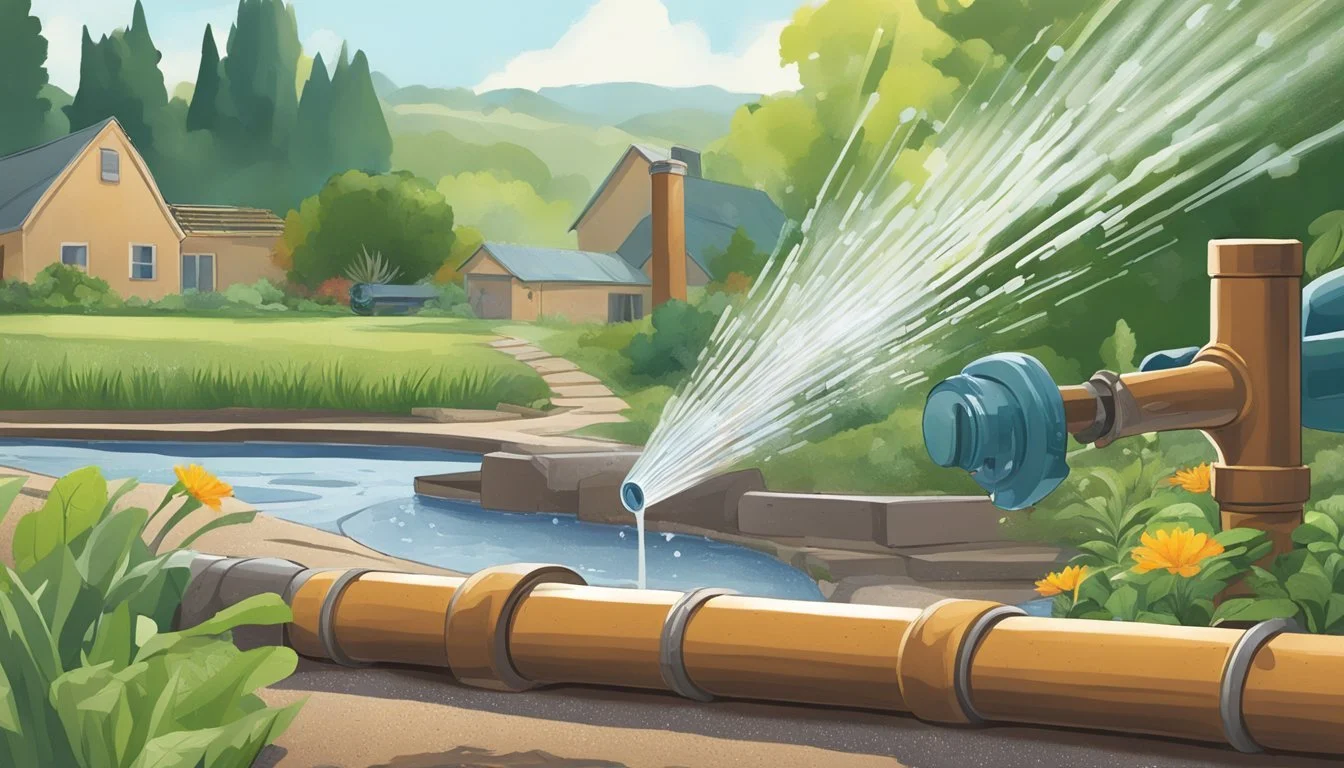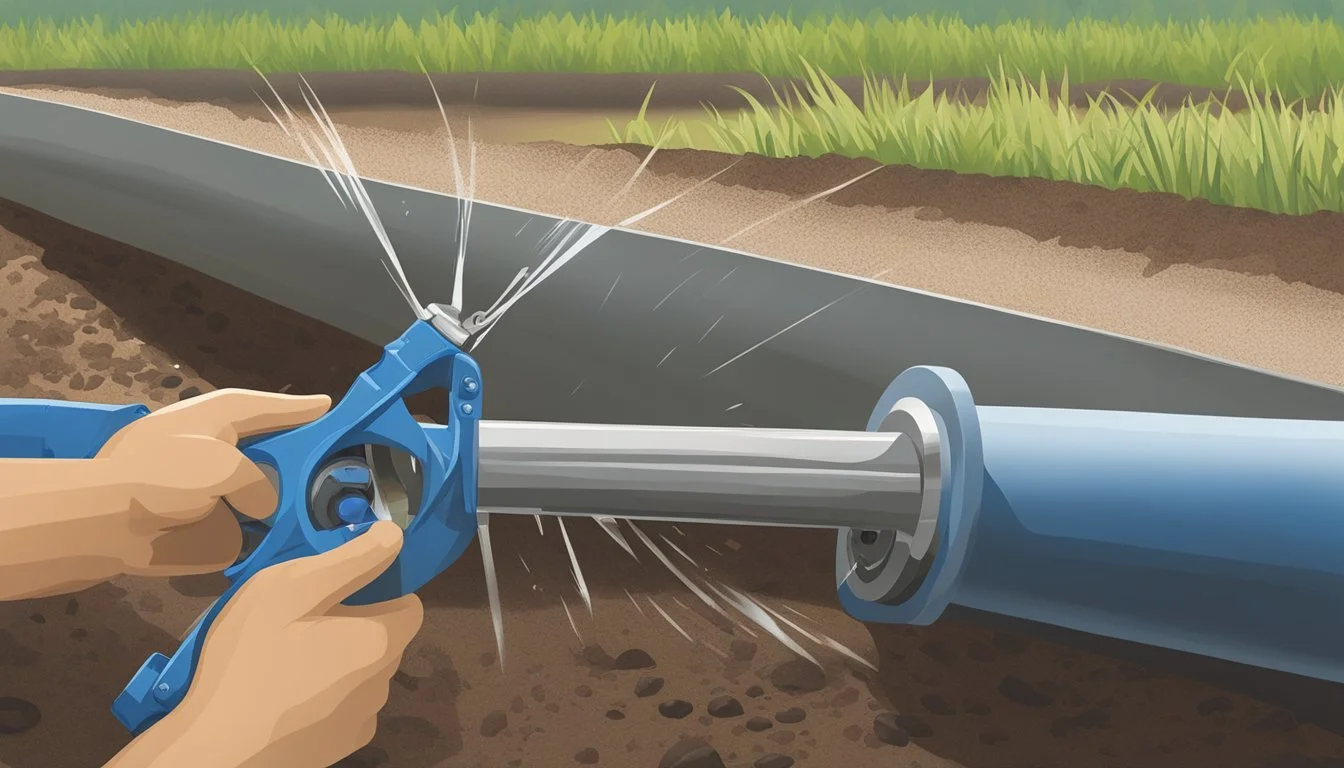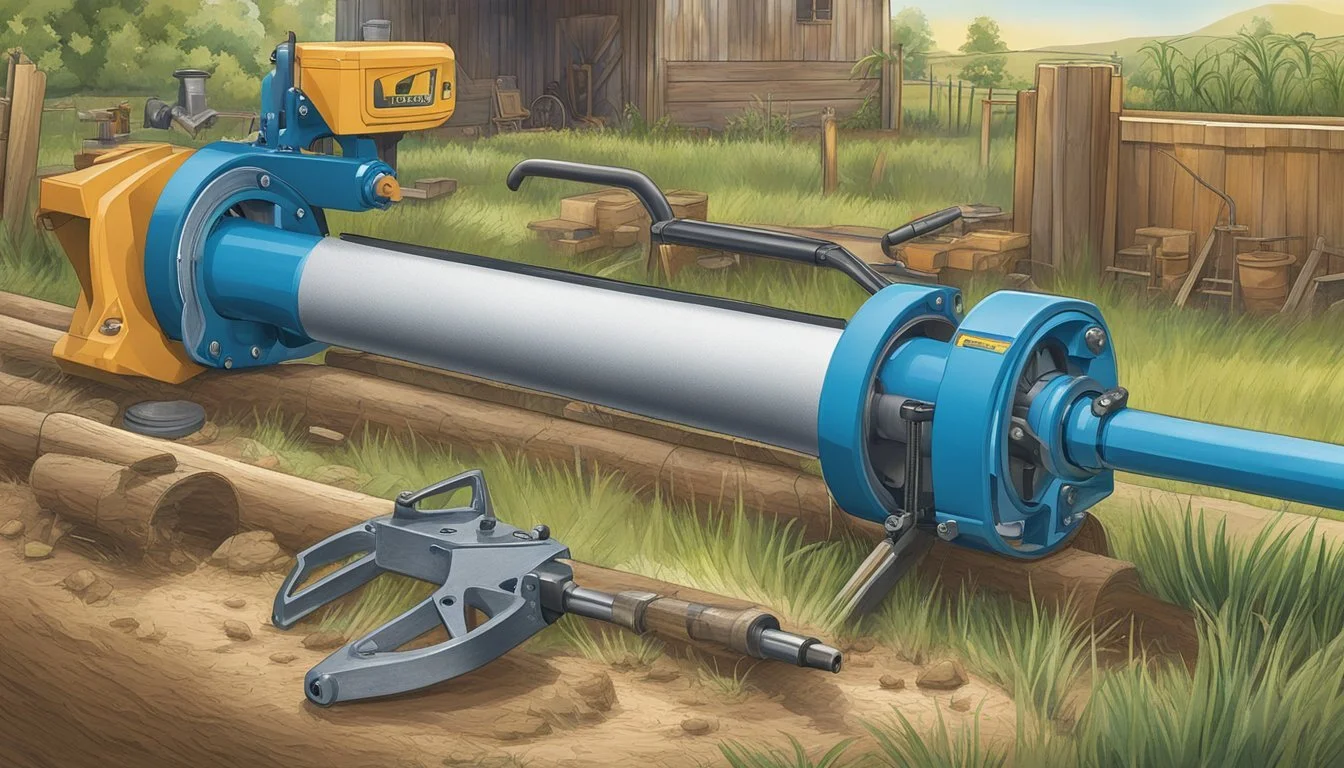The Best Poly Pipe Cutters for Effortless Irrigation Pipe Cutting
Top Picks for Homesteaders
Effortless irrigation system installation and maintenance are crucial for homesteaders who rely on a steady supply of water for their crops and livestock. A key tool in the establishment of such systems is a reliable poly pipe cutter. These cutters are designed to slice through polyethylene pipes, which are commonly used due to their flexibility, durability, and suitability for subterranean water systems.
Choosing the right poly pipe cutter can make a significant difference in the ease and quality of irrigation setup. While traditional PVC pipe cutters are abundant, specialized poly pipe cutters are engineered to make precise cuts without leaving burrs that could impede water flow or cause leaks. Advanced cutters often feature ratcheting mechanisms or special blades that offer a clean cut with minimal effort, ensuring a straightforward installation process for homesteaders.
Understanding Poly Pipes and PVF
In the realm of homesteading, poly pipes and various plastic piping systems are foundational for effective irrigation. They have differing characteristics appropriate for specific applications and durability needs.
Types of Poly Pipes and Applications
Polyethylene (PE) Pipe: Commonly used in homesteading, PE is a flexible plastic pipe option. Here are some specifics:
Low-Density Polyethylene (LDPE): Ideal for above-ground irrigation systems, due to its flexibility and durability against UV exposure.
High-Density Polyethylene (HDPE): Suitable for potable water supply and irrigation; more rigid and suitable for trenching.
Cross-linked Polyethylene (PEX): Often used for indoor plumbing, radiant heating systems, and its resistance to temperature extremes makes it useful in various outdoor applications.
PVC Pipe: Stands for Polyvinyl Chloride, and is well-known for its use in:
Construction Projects: Due to its durability and resistance to chemicals.
Agricultural Irrigation: PVC's rigidity is beneficial where a stable, less flexible pipe is needed.
Chlorinated Polyvinyl Chloride (CPVC): A variant of PVC, further chlorinated to withstand higher temperatures and suitable for hot water delivery.
Materials and Durability
Materials: Most poly pipes and plastic piping, including PE and PVC, are fortified with a metal core, brass fittings, or are fully plastic. The choice depends on:
Application Needs: Whether the pipes will be used above or below ground.
Environmental Factors: UV exposure, temperature shifts, and chemical contact.
Durability: Here are the durability aspects:
PEX: Known for its flexibility, PEX can expand and contract without breaking.
PVC and CPVC: Both offer a rigid alternative, with CPVC offering enhanced temperature resistance.
PE: Noted for being particularly durable with a high tolerance for environmental stressors.
When considering plastic pipes for homesteading purposes, one must weigh the types of poly pipes against their intended use and the durability required for the job at hand.
Choosing the Right Cutter for Your Pipes
When it comes to slicing through poly pipes for irrigation systems with precision and ease, homesteaders must consider the material and blade of the cutter and its compatibility with the pipe's diameter and size.
Evaluating Cutter Materials and Blades
Tube cutters and tubing cutters designed for irrigation often feature blades made of durable metals like stainless steel. For additional strength, look for a cutter with a blade crafted from alloys, such as manganese or aluminum. The make of the blade determines the longevity and sharpness over time; a steel blade ensures cleaner cuts through poly pipes without requiring frequent replacement.
Ideal Blade Materials:
Stainless steel blade: Resistant to rust, provides clean cuts
Manganese steel blade: Known for durability, retains sharpness
Aluminum-bodied cutter: Lightweight, less user fatigue
Analyzing Cutting Capacity and Size
Determining the right cutting capacity is crucial, as cutting tools must accommodate the outer diameter of the pipe. Pipe saws offer a larger range but might be excessive for smaller operations. Smaller handheld cutters, on the other hand, should provide enough range to address typical residential irrigation pipe sizes.
Cutting Capacity Guidelines:
Check the maximum outer diameter the tool can handle
Ensure the tool allows for adapting to various pipe sizes
Cutting tools vary, and each type serves a specific purpose. Assessing the project's scope and the pipes' properties ensures the right tool selection for efficient and straightforward cutting tasks. Homesteaders benefit from investing in a proper poly pipe cutter that delivers ease of use and quality results.
Top Cutter Brands and Models
When selecting a poly pipe cutter, professionals and homeowners alike have distinct needs. It's essential to choose a model that aligns with the frequency of use and the type of cutting tasks at hand. High-quality brands provide durability and precision, while more cost-effective options can offer convenience and ease for smaller projects.
Professional Pipe Cutters for Heavy Duty Use
Milwaukee and RIDGID are revered names in the market for heavy-duty pipe cutters. The RIDGID 23498 RC-1625 is a top-rated heavy-duty cutter, designed for professional plumbers who require reliable and efficient cutting. It stands out for its durability and ease of use, with the capability to cut through various types of plastic pipes, including polyethylene (PE).
RIDGID 23498 RC-1625
Type: Heavy-duty ratchet cutter
Max Pipe Size: Up to 1-5/8 inches OD
Material Construction: Aluminum
Suitable For: PE, PEX, PP, PVC, and multilayer tubing
Highly regarded by users, the RIDGID RC-1625 model is crafted from quality aluminum, offering a robust solution for frequent, heavy-use scenarios.
Cost-Effective Options for Casual Use
For those who need a budget-friendly option for occasional irrigation pipe cutting, brands like Klein Tools and Lenox Tools offer practical solutions that balance efficiency with a low price.
Klein Tools Pipe Cutter
Type: Single-stroke plastic pipe cutter
Max Pipe Size: Generally up to 3/4 inches OD
Material Construction: Usually featuring a steel blade
Suitable For: Thin-walled polyethylene and polypropylene pipes
Lenox Tools provide another budget option with their pipe cutters, which are known for their precision and ergonomic designs to reduce hand fatigue.
Lenox Tools Pipe Cutter
Type: Ratcheting cutter
Max Pipe Size: Suitable for small to medium OD pipes
Material Construction: Incorporates stainless steel for the cutting blade
Suitable For: CPVC, PVC, PEX, PE, and more
Crafted for less frequent use, these cutters are ideal for home gardeners or small-scale homesteads, where pipe cutting is not a daily task but still requires efficient tools to get the job done when needed.
Cutter Features for Enhanced Usability
When choosing poly pipe cutters for homesteading irrigation projects, two critical aspects stand out for enhanced usability: the design and the cutting mechanism. These factors greatly influence the effort required and the precision of the cut.
Ease of Use and Ergonomic Design
Ergonomic Handle and Grip: A poly pipe cutter with an ergonomic handle makes it comfortable for lengthy use, reducing user fatigue. This is especially crucial for homesteaders who frequently work on irrigation systems. Pipe cutters with ergonomic grips often allow for one-handed use, making operation smooth and efficient.
Ease of Operation: Many pipe cutters are designed for one-handed use, making them highly practical for quick cuts in tight spaces.
Advanced Cutting Mechanisms
Ratchet PVC Pipe Cutters: These cutters are equipped with a ratcheting mechanism, enabling them to cut through poly pipes with a series of easy, controlled squeezes. They are particularly useful for making clean and straight cuts.
Spring-Loaded Mechanisms: Pipe cutters featuring spring-loaded mechanisms can open automatically between cuts, speeding up the workflow and reducing the effort required for repeated cutting action.
Electric PVC Pipe Cutters: For those seeking faster and less manual operation, electric PVC pipe cutters provide an efficient alternative. Electric cutters are a powerful aid in larger projects or where a high volume of cuts is required. They deliver quick and precise cuts with minimal physical effort.
Maintaining Your Pipe Cutter
Proper maintenance of poly pipe cutters is essential for ensuring clean cuts and long-term performance. It's critical for both professionals and DIY enthusiasts to understand how to keep their tools in top condition.
Replacing and Sharpening Blades
Poly pipe cutters require sharp blades to make precise cuts. Over time, blades can dull, leading to ragged edges which may require rework. Users should monitor the cutting edge and sharpen the blades regularly to maintain performance. For some models, replacement blades are available and can easily be swapped out to restore original sharpness. When the blade becomes too worn to sharpen, one should consult the manufacturer's guidelines on how to procure and install replaceable blades correctly.
When to Replace: Inspect the blade after each use; replace if you notice any chips or significant wear.
How to Sharpen: Use a fine file or whetstone, following the original blade angle.
How to Replace:
Disassemble the cutter as per manufacturer's instructions.
Remove the old blade.
Insert the new blade ensuring it's securely in place.
Reassemble the cutter, ensuring all parts are tight and secure.
Warranty and Service Options
Many poly pipe cutters come with a manufacturer's warranty, and some even offer a lifetime warranty. This can include coverage for defects and, sometimes, free blade replacement. Professionals should keep the warranty information accessible and adhere to the service guidelines to utilize these benefits.
Lifetime Warranty: Check if the manufacturer offers this and the conditions that apply.
Service Options: Manufacturers may offer professional sharpening services or replacements.
Cleaning and Preventing Corrosion
To prolong the life of the pipe cutter, it should be cleaned after each use. Removing debris and residue prevents the mechanism from jamming. For corrosion prevention, a regular application of Teflon or other corrosion-resistant lubricants is recommended. This is especially important for plumbers and professionals who use their cutters frequently in various environments.
Cleaning Steps:
Wipe away any dirt or grime with a damp cloth.
Dry the cutter thoroughly to prevent rust.
Apply a lubricant, focusing on movable parts.
Corrosion Prevention: Use corrosion-resistant spray or oil sparingly to protect the tool.
By following these maintenance steps, users can ensure their poly pipe cutters remain reliable and efficient over time, making the investment in high-quality cutters worthwhile.
Alternative Cutting Tools and Techniques
When it comes to cutting irrigation pipes for homesteading, there are several tools and methods available beyond the standard poly pipe cutter. Each offers unique advantages depending on the project's requirements.
Using Standard Tools like Hacksaws
Hacksaws are a readily available tool that can be found in most homesteaders' toolboxes. They are particularly useful for crafts and repairs when precision is less critical. A hacksaw consists of a fine-toothed metal blade tensioned in a C-shaped frame, ideal for cutting through plastic pipes in situations where a specialized cutter is not available. However, achieving a straight cut requires a steady hand and careful alignment.
Advantages:
Accessibility: Hacksaws are common and relatively inexpensive.
Versatility: Able to cut various materials, not just plastic.
Disadvantages:
Effort: More physical strength is needed for cutting.
Precision: Less likely to produce a clean, square cut compared to specialized cutters.
Understanding Electric and Specialized Cutters
For homesteaders engaging in heavy-duty construction, electric and specialized cutters deliver neat and efficient cuts with less effort. These tools vary from simple ratcheting plastic pipe cutters to more complex electric models. Shears are another alternative that can provide quick, clean cuts on thinner or softer poly pipes. When one opts for electric cutters, it's important to consider the tool's compatibility with the type of pipe and the frequency of use.
Advantages:
Efficiency: Electric cutters are fast and require less manual effort.
Accuracy: Result in precise cuts, essential for a robust irrigation system.
Disadvantages:
Cost: High-quality electric cutters are more of an investment.
Power Dependency: Not as portable due to reliance on electricity or batteries.
Integrating Cutters into Irrigation System Work
When establishing or maintaining a homestead's irrigation system, the choice of poly pipe cutter is crucial for both efficacy and safety. Irrigation systems depend on a network of pipes that need precise cuts for a leak-proof fit.
Types of Cutters for Different Needs:
Manual Cutters: Best for small-scale applications, they offer affordability and simple use.
Ratchet Cutters: Ideal for repeated use, providing ergonomic benefits and reducing hand fatigue.
Power Cutters: Reserved for larger projects, enabling quick and efficient cuts through thicker pipes.
For seamless integration of these tools into the workflow, consider the size and accessibility of the irrigation system:
Small Systems: A manual cutter often suffices, providing accuracy without the need for power tools.
Large-Scale Systems: A ratchet or power cutter will speed up the process and minimize strain.
Execution Tips:
Measure Twice, Cut Once: Ensure precise cutting by marking the pipe clearly before the cut.
Secure the Pipe: Hold the pipe firmly to avoid slippage and ensure a straight cut.
Smooth Edges: After cutting, remove any burrs or rough edges to prevent damage to seals or fittings.
Remember, safety comes first—always wear protective eye gear and follow the manufacturer's instructions. With the right cutter integrated into your work process, maintaining an irrigation system becomes a streamlined, more manageable task.
A Comprehensive Buying Guide
When selecting a poly pipe cutter for irrigation tasks, homeowners and homesteaders should weigh the tool's capabilities against its cost, and also consider the insights from user reviews and product comparisons.
Assessing Features vs. Price
Buyers should first delineate essential features necessary for cutting poly pipe, such as sharpness, durability, and ease of use. For cutting materials like copper, a robust construction is vital. However, for rubber tubing, purchasers may prioritize cutters designed for softer materials with more bespoke features like a Zantle pipe cutter, which could be more expensive but offers precision.
Basic Cutter:
Features: Durable blade, Manual operation
Price: $
Advanced Cutter:
Features: Sharp blade, Auto-sizing, Comfort grip
Price: $$$
Premium Cutter:
Features: Rust-resistant, Multi-material use (incl. copper), Ergonomic design
Price: $$$$
Reading Reviews and Comparing Products
Scrutinizing reviews can prevent future regrets. Homesteaders should look for reviews specifically mentioning copper pipe cutting, if applicable, or the handling of rubber tubing. Customer feedback often provides insight into the longevity and reliability of pipe cutters. For expensive options, one expects a proportionate increase in quality and functionality. Comparisons between products should highlight differences in value and highlight if a premium is paid for the brand or for tangible benefits.
Conclusion
Choosing the right poly pipe cutter is essential for homeowners and professionals involved in homesteading irrigation projects. The tools listed in this article were selected for their reputation for making precise cuts, ease of use, and durability. When working with PVC and other plastic pipes, it is important to have a cutter that can deliver a clean, burr-free cut to ensure a proper fit and avoid potential leaks.
Precision: High
Durability: Medium
Ease of Use: Medium
They should consider a tool capable of cutting through various plastic pipe materials easily. Ratcheting cutters are particularly useful as they require less user effort and can handle different pipe diameters efficiently.
For those frequently engaging in plumbing or irrigation tasks, investing in a reliable poly pipe cutter will save time and reduce material waste. Remember to maintain your cutter regularly to keep it in optimal condition.
It is advisable for users to consider the diameter of the pipes they intend to cut frequently and choose a size-appropriate tool. A well-made poly pipe cutter is a valuable addition to any tool collection, facilitating quick work of pipe installation or repair tasks in any homesteading scenario.







